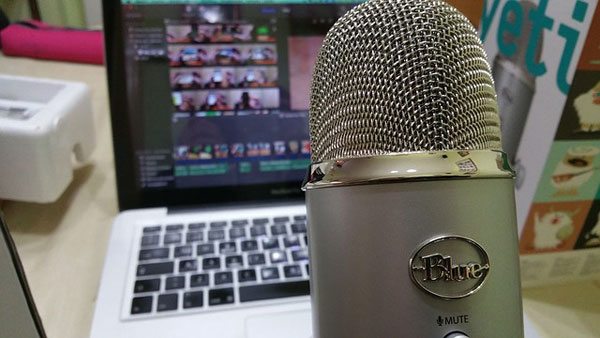
There is a “disconnect between policy discourse and observable reality on the ground,” noted Jamie Kalven of the Invisible Institute. Kalven was talking about public housing, but he could have been talking of course about a far broader range of issues.
The Invisible Institute began as a tongue-in-cheek name for the publisher of a public housing online reporting platform in 2000. Today, it is a nonprofit journalism production company on Chicago’s South Side dedicated to “investigative reporting, multimedia storytelling, human rights documentation, the curation of public information, and the orchestration of difficult public conversations.” In 2016, it won a $400,000 grant from the Knight Foundation to support its Citizens Police Data Project, an online toolkit for reporting, tracking and analyzing allegations of police misconduct.
At NPQ, our guiding philosophy has long been that “an active, engaged, and sometimes disruptive civil sector is critical to a healthy democracy in the same way that a free and independent press is.” But as a slew of media cutbacks, including the latest round of cost-cutting at the Denver Post, makes clear, today the nation’s “free and independent press” faces many challenges.
So, it was heartening at this month’s PolicyLink Equity Summit—a national conference that attracted over 4,000 people—to be able to go on a “mobile tour” of Chicago focused on “Local Journalism, Storytelling, and Action.” The tour highlighted a number of creative interventions under way that could lead to major ripples in both the journalistic enterprise itself and the greater environment of narrative and storytelling from which news stories emerge.
WBEZ
Natalie Moore has been a reporter for the last 11 years for WBEZ, the local Chicago national public radio (NPR) affiliate. She is also the author of The South Side: A Portrait of Chicago and American Segregation. Moore met with us from her studio in the Park Manor neighborhood on Chicago’s South Side at East 75th Street and Prairie. Moore pointed out that WBEZ’s main bureau is located at Navy Pier, a part of Chicago surrounded by Lake Michigan and which is even physically isolated from the downtown Loop, let alone the rest of the city.
Moore joined WBEZ in 2007 when the station first opened its South Side Bureau. The idea behind the South Side studio is simple: “We need to do a better job of covering communities. Let’s put offices in communities.” Although the concept is straightforward, it is rare for radio stations to do this, Moore noted. While suburban news bureaus are common, relatively few NPR affiliates have bureaus in urban neighborhoods, although the idea is starting to catch on; for example, in 2016 Austin NPR affiliate KUT launched a similar bureau in the city’s East Austin neighborhood, long a hub of Black Austin, to be able to better tell stories about the community, including the threat of displacement that many long-time East Austin residents face.
As for Moore’s work, she said that she was part of a “Race, Class and Communities” team: “Equity is a big part of our work. We cover a lot of stories around segregation.” For example, Moore’s team made a Freedom of Information Act request of the state to get data on car repossessions stemming from subprime lending to car buyers. Another story involved a resident campaign to shut down a motel that was serving as a prostitution hub, similar to another case NPQ profiled in Philadelphia. Moore mentioned that she got the owner on tape saying that it was not “my business to know what people are doing in their rooms.” The story drew attention to neighbors’ complaints and led to the motel’s closure for being a neighborhood nuisance. As Moore notes, being located in the neighborhood gave her the background knowledge needed to pursue the story; the bureau also serves as a site for community meetings and small public events.
Free Spirit Media
While innovation can come from within mainstream media outlets like public radio—smaller Chicago independent media are also having a growing influence, finding ways to bring in new voices and tell new stories. Jeff McCarter is founder and executive director of Free Spirit Media, a nonprofit whose mission is to transform “media and society by providing opportunities for emerging creators, primarily from communities of color, to produce and distribute original content and to pursue artistic, personal and aspirations.” The organization meets this mission through a combination of programs, which it divides into three categories: in-school programs, afterschool and summer digital media programs, and career training programs.
Rachel Jones, a program coordinator at Free Spirit, notes that their programming seeks to “build equity by equipping young people of color to create media that challenges dominant narratives.” For instance, Jones observed, the way “violence in Chicago is covered is not satisfactory.” The media outlet gives South Side Chicago youth the ability to write their own stories. Jones added that the outfit also “builds equity by developing pathways for young people of color to enter the journalism, film and television industries, and transform them from within.”
Jones noted that Free Spirit employs a unique approach to workforce development. Many workforce development programs teach decontextualized “soft skills”—i.e., skills, competencies, behaviors, attitudes, and personal qualities that enable people to effectively navigate a workplace environment. Free Spirit Media teaches these skills too, but places those skills within a broader conversation of code switching and helps youth of color to navigate professional media spaces that are often white dominated. Tracee Stanford, the group’s civil media manager, noted that the goal is to “be in control of your narrative.” This involves, Stanford explains, both teaching technical professionals skills and how to succeed commercially.
Free Sprit runs three primary programs. One, called Free Spirit Media News or FSM News works with teens drawn from local high schools to produce local news shows with student-generated content. A second program, called Real Chi Youth, is based on the West Side in Lawndale and work with an older 18–25 year-old cohort to produce a range of print and video stories on topics such as anti-gun marches, policing, racial discrimination, stormwater, public schools, and mental health, among others. Free Spirit PRO is a social enterprise that produces content for a range of Chicago nonprofit clients; the business employs young adults to work with staff production professionals and specializes in social impact storytelling, documentaries, public service announcements, and special event coverage.
Sign up for our free newsletters
Subscribe to NPQ's newsletters to have our top stories delivered directly to your inbox.
By signing up, you agree to our privacy policy and terms of use, and to receive messages from NPQ and our partners.
Arlana Shikongo, who works for Real Chi Youth, explains how storytelling at Free Spirit Media differs from the mainstream approach. “When we approach a story,” Shikongo said, “we have to keep in our frame of mind that we are talking to individuals. The mainstream media fails to hold people to the standard of being humans. They sensationalize, rather than reflect people’s lived realities. When we tell a story, we make sure that we give the context and background and give our audience and readers an understanding of where this is coming from.”
“Working with youth is difficult,” Shikongo added. “These are people who generally don’t get a seat at the table. We realize that the perspectives we communicate are left out of mainstream media. We feel we have a big responsibility for our reporting to be as close to true as we can be. A lot of our reporters, the reason we are doing this work, is that we are from these communities and we care so much about this. I have that extra pressure. I have to make sure I remove myself personally and elevate the voices of people who are voiceless.”
What the Mainstream Misses
Other speakers on the Chicago media tour reinforced this message of the need to fill in the gaps that the mainstream media, either willfully or through ignorance, frequently misses. Kalven from the Invisible Institute noted that media discussion of the Cabrini Green public housing projects –now torn down—missed much of the story. “Nobody knew anything about life in these places,” Kalven said. Kalven noted that barely hidden in the discourse of “isolated urban poverty” was “a form of denial.”
“These are abandoned communities. The amount of cliché and laziness was incredible. I ended up spending close to 15 years living through the demolition of these buildings,” said Kalvin.
Harry Backlund noted that the gap between media coverage and on-the-ground resident experience has been at least as profound in policing. Backlund, a cofounder of City Bureau, said the organization ran three main programs: 1) a reporting fellowship with a mentorship component; 2) a program in which participants receive training and paid assignments to document public meetings 3) a public newsroom, which includes hosting weekly range-free public workshops on Thursday evenings.
Backlund noted that City Bureau got its start reporting on police accountability. Good journalism, Backlund observed, “is not just about giving the mic to someone else. We need to make new institutions.”
“One of our early stories,” Backlund pointed out, was about a spokesperson for the Fraternal Order of Police named Pat Camden. It was well known that he would show up at the scene of any officer-involved shooting and would have the first word and give the first quote and set the narrative for what happened in these shootings. Our stories looked at the effect that had. The difference was striking. We got a lot of feedback from journalists who are very aware of the problem and felt implicated in some ways.”
Kavlin chimed in, “To report on a radically unjust society in terms of race, is to always be pushing against the gravitational force of the official narrative and people’s denial. We deny the things we don’t feel we have capacity or agency to change. Some sense of hope or possibility actually changes people’s perception. That is a central point. That really relates to people’s ability to see.”
Shikongo added, “You need to invest in journalism that is fearless. If your journalists are not doing things that scare you or scare themselves, they are not doing their job. We have to hold institutions and politicians accountable. Nobody is going to police themselves if the media doesn’t hold folks accountable.”
But the funding environment does not make it easy to fund the journalism needed to be fearless and maintain public accountability. While some suggested that maybe Kickstarter could fund their work, Backlund conceded that, “Realistically, we know we need foundation support.”
Backlund added that it was also important “to make an adversarial case of funding. “Look at how they [philanthropy] fund journalism schools and universities,” Backlund said. “A huge amount of money goes to them.” Ironically, Backlund noted, “as the economy has gotten worse, the paths [into the journalism profession] have gotten more elite. The professional schools are complicit in that. There are some exceptions, but there is a huge amount of money that could fund real solutions that is instead going to those institutions.”











